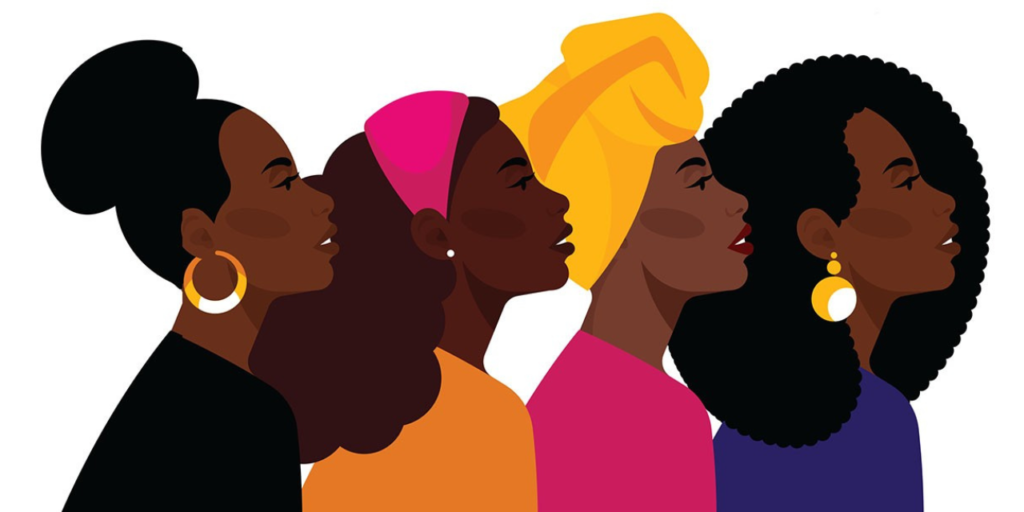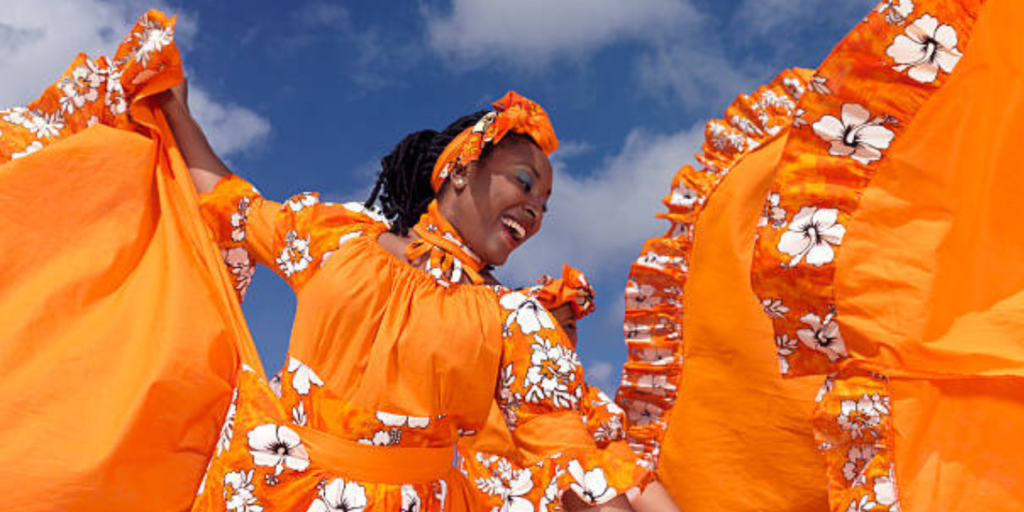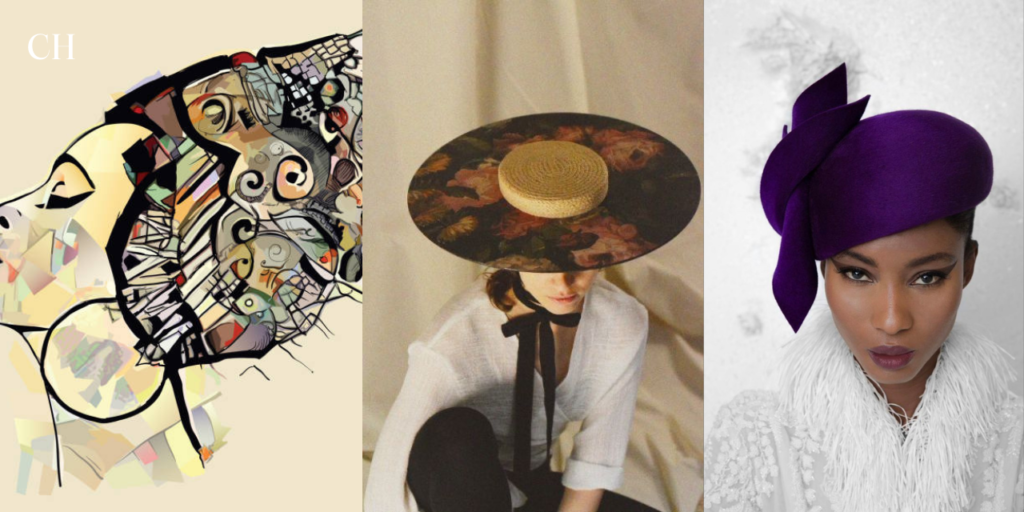
Church hats are widely used in the African American culture, particularly by black women. These hats are more than just accessories; they are emblems of ethnic identity, religious devotion, and individual expression. Church hats for black womens have historically played an important role in African American religious and social life, representing a blend of spirituality, fashion, and tradition. This study goes into the rich tapestry of black women’s church hats, examining their historical roots, cultural significance, and lasting legacy.
Historical Evolution of Church Hats

Image Source: Reckon
The Historical Evolution of Church Hats recounts the evolution of this practice from its beginnings in African American history to its current relevance. The development of church hats is linked to the history of African American women’s fashion, social movements, and religious traditions.
The history of Church Hats for Black womens and headwear can be traced back to the early 1700s in sub-Saharan Africa and quickly became a staple for African women representing communal identity and individuality.
Whether it was Nubian women adding rich fabrics and flowers to their head wraps or Nigerian queens choosing finer fabrics for lightweight pieces, Black women, particularly in parts of West Africa have expressed their beauty and style through hats and head wraps for hundreds of years.
On some occasions, headwraps were indicators of women’s marital status, a sign of respect when visiting their in-laws and as well as protection from the sun.
Reckon
Early Roots:
The habit of wearing church hats among African American women dates back to the early twentieth century. During this time, black churches acted as important community hubs, providing comfort and support in the face of racial segregation and prejudice. Women wore caps to represent themselves and their ethnic identity within the church.
Influence of Social Context:
The Jim Crow era and the Civil Rights Movement had a profound impact on the evolution of church hats for black womens. In a racially oppressive culture, the church offered a safe haven for African Americans to affirm their dignity and agency. Elaborate hats became emblems of pride and resistance, allowing women to emphasize their presence and originality in settings where they were frequently ostracized.
Fashion Trends and Influences:
Church hats’ styles and designs varied over time, reflecting changes in fashion trends and societal conventions. Expensive, wide-brimmed hats covered with feathers, flowers, and complex embellishments became in popularity during the 1950s and 1960s, influenced by the era’s glossy style.
Iconic Figures and Cultural Influences:
The habit of wearing church hats was popularized by iconic personalities in the African American community, including gospel musicians, civil rights activists, and church leaders. Their dazzling appearances at church events and other gatherings contributed to the recognition of church hats as emblems of elegance and sophistication.
Continued Relevance:
Despite changing fashion trends and societal conventions, church hats are a long-standing institution in the African American community. Today, women still wear hats to church to follow tradition, express personal taste, and build a sense of community and sisterhood.
Overall, the historical evolution of church hats demonstrates African American women’s endurance, ingenuity, and cultural pride. From its humble roots as a form of self-expression in the face of oppression to its current relevance as a symbol of faith and empowerment, church hats remain a beloved part of African American culture.
Cultural Significance and Symbolism

The cultural significance and symbolism of church hats for black women are multidimensional, embracing themes of identification, community, spirituality, and individual expression. Understanding these aspects reveals the fundamental role that church hats have in African American society.
Identity and Cultural Pride:
Church hats are strong emblems of African-American identity and cultural heritage. They are strongly founded in black church traditions and reflect the diverse experiences and tribulations of African American women throughout history. Wearing a church hat allows black women to express their ethnic pride and celebrate their history in a culture that has frequently tried to marginalize them.
Fashion and Personal Expression:
Church hats are rich in tradition and meaning, yet they can also be worn to show personal style and originality. Church hats are no exception to the long tradition of black women using dress to express themselves and gain empowerment. Each hat is a one-of-a-kind work of art that reflects the wearer’s specific preferences and personality. Church hats, which range from lavish, wide-brimmed caps to sculptural designs covered with feathers and flowers, provide limitless opportunities for personal expression.
Sisterhood and Community:
Church hats promote a sense of sisterhood and togetherness among black women. In church settings, the sight of ladies wearing ornate hats fosters a sense of solidarity and common identity, bridging gaps across generations and social strata. Church becomes more than just a place of worship; it is also a gathering place for women to support and encourage one another.
Resistance and Empowerment:
In addition to their cultural and religious significance, church hats contain political and social implications. Throughout history, black women have utilized fashion to defy injustice and discrimination. By wearing ornate hats, black women reclaim their autonomy and assert their presence in areas where they have historically been excluded or marginalized. Church hats have come to symbolize empowerment, tenacity, and defiance in the face of hardship.
To summarize, the cultural significance and meaning of church hats for black women go well beyond ordinary fashion items. They are symbols of identity, faith, community, and empowerment, representing the rich fabric of African American culture and history. As long as there are black women in church pews, the tradition of wearing church hats will survive as an important part of African American legacy.
Fashion and Style: From Tradition to Trendsetting

Fashion & Style: From Tradition to Trendsetting depicts the evolution of church hats in the fashion world, demonstrating how these items have transformed from traditional emblems of cultural identity to contemporary trendsetting statements.
The evolution of church hat style evolved from African cultures to fashion icons like Madam C.J. Walker and now to second-generation milliners, designers and makers of women’s hats, like Meeka Robinson Davis of One-Of-A-Kind Hats.
“Hats have been a rich part of African women’s culture. We have always had this feeling of expressing ourselves through dress and a part of that has been hats. A well-dressed lady has always had on a hat,” Robinson Davis told Reckon.
Reckon
Traditional Elegance:
Church hats have traditionally been linked with elegance and sophistication. In their classic form, these hats frequently include large brims, expensive fabrics, and complex embellishments like feathers, flowers, and bows. Rooted in black church traditions, these hats ooze ageless elegance and grace, expressing the humility and solemnity of religious practice.
Influence of Cultural Tradition:
Church hat designs are heavily influenced by African American cultural traditions and aesthetics. Many hats have brilliant colors, bold patterns, and meaningful embellishments that pay tribute to African history. These cultural influences give church hats a unique flair and vitality that distinguishes them from other types of headwear.
Iconic Figures and Inspirations:
Gospel singers, civil rights activists, and church leaders are examples of iconic African American people who have influenced the fashion and style of church hats. Their beautiful appearances at church ceremonies and other gatherings have influenced generations of ladies to adopt the custom of wearing ornate hats as a statement of elegance and sophistication.
Modern Interpretations:
Church hats, while anchored in tradition, have developed to reflect modern aesthetics and design trends. Contemporary designers and milliners are reworking the basic silhouette of church hats, infusing them with new shapes, materials, and embellishments. Modern church hats provide fashion-forward women with a wide range of alternatives, from avant-garde sculptural creations to minimalist designs with clear lines.
Trendsetting Statements:
Church hats for black womens have evolved from their traditional position as religious wear to become trendsetting fashion statements. Influential designers and celebrities have embraced the trend of wearing expensive hats to high-profile events, red carpet premieres, and fashion shows, raising church hats to the position of must-have accessories among the fashion elite.
Black women will never stop wearing hats, whether to church or out and about. This year the church hat style, according to Robinson Davis, will be fascinators emulating the British headband aesthetic.
“They’re doing a lot of those styles because they’re easy to wear with a pantsuit or a dress and it’s really cute and it’s easy to be worn and it doesn’t mess up your hair,” Robinson Davis told Reckon.
With a modern look and minimalistic approach to hats, the 2020 era of Black women’s headwear will emulate simplicity.
Reckon
Cultural Appropriation and Recognition:
Despite their growing appeal in mainstream design, church hats are nevertheless firmly rooted in African American cultural customs. As these hats gain popularity and appreciation in the fashion industry, it is critical to recognize and celebrate their cultural roots and significance. This accreditation serves to preserve the integrity and authenticity of church hat tradition while also honoring its contributions to the world of fashion.
In conclusion, the journey of church hats from tradition to trendsetting demonstrates the ongoing attractiveness and significance of these items in the world of fashion. Church hats, which are rooted in cultural tradition yet embrace current aesthetics, continue to attract and inspire fashion fans all over the world, reinforcing their standing as iconic symbols of elegance, grace, and cultural pride.
Social and Political Implications

The social and political implications of church hats for black women are substantial, representing both the difficulties and accomplishments of African American communities across time. Examining these consequences sheds light on the broader sociopolitical environment in which church hats have evolved:
Expression of Identity and Agency:
Church hats represent black women’s identity and agency, allowing them to affirm their presence and individuality in areas where they have historically been neglected. In a society marked by racial prejudice and injustice, wearing ornate hats to church becomes an act of defiance and self-affirmation, sending a message to the world that black women will not be silent or forgotten.
Resistance Against Stereotypes:
Church hats defy common assumptions about black womanhood by highlighting beauty, elegance, and grace. Church hats provide a counter-narrative to a culture that frequently perpetuates negative stereotypes of black women as loud, aggressive, or hypersexualized, celebrating their dignity, power, and endurance.
Visibility and Representation:
Church hats for black women help to increase the visibility and representation of black women in public places. Black women who wear lavish hats want to be seen and heard, proclaiming their presence in areas where they have historically been excluded or disadvantaged. In church settings, the sight of women wearing colorful hats produces a visual spectacle that compels attention and reverence.
Cultural Preservation and Heritage:
Church hats are essential for the preservation and celebration of African American cultural history. These hats, based on black church customs, represent African American communities’ rich history, spirituality, and inventiveness. By donning church hats, black women honor their ancestors and reassert their connection to a tradition of strength and resistance.
Empowerment and Solidarity:
Church hats strengthen and unite African women, fostering a sense of sisterhood and community. In church settings, women gather to support and inspire one another, sharing stories, experiences, and encouraging words. Church hats become symbols of togetherness and strength, forming links of solidarity across age, class, and background.
Political Mobilization and Activism:
Church hats have served as symbols of political mobilization and engagement in African American communities. During the Civil Rights Movement, black women attended rallies, marches, and protests with ornate hats to express their rights and demand justice. Today, church hats are worn as symbols of resistance and empowerment, motivating activism and social change.
Finally, the social and political ramifications of church hats for black women are far-reaching, representing the intricate interaction of identity, resistance, and empowerment in African American communities. By adopting the habit of wearing ornate hats to church, black women regain their agency, establish their presence, and celebrate their cultural history in a culture that frequently strives to minimize or erase their contributions.
Personal Empowerment and Self-Expression

Personal empowerment and self-expression are major elements in church hats for black women, representing each wearer’s unique agency and creative autonomy. Here’s how church hats promote personal empowerment and self-expression:
Asserting Identity:
Church hats help black women affirm their identities and express themselves genuinely. Women can express aspects of their personality, cultural heritage, and personal taste through the style, color, and ornamentation of their hat. This act of self-expression is empowering because it affirms the wearer’s ability to shape her own identity and story.
Celebrating Individuality:
Each church hat is a one-of-a-kind work of art that reflects the wearer’s distinct personality and inventiveness. Whether embellished with feathers, flowers, or intricate designs, each hat tells a story and has a special value for the woman who wears it. By embracing their distinctiveness and enjoying their differences, black women regain their autonomy and assert their presence in the world.
Fostering Confidence:
Church hats have the ability to increase confidence and self-esteem. When wearing a fashionable and elegant hat, ladies typically feel a sense of accomplishment and empowerment. Wearing a church hat can have a transforming effect on women, instilling confidence and self-assurance that radiates outward and alters how they show themselves to the world.
Cultural Affirmation:
Wearing a church hat is a very meaningful cultural ritual for many black women, affirming their ancestry and sense of community. Women who embrace this custom commemorate their ancestors’ legacies while also celebrating African American culture’s tenacity and ingenuity. This sense of cultural validation reinforces their sense of self and enables them to navigate the world with pride and confidence.
Navigating Spaces of Power:
In a society where black women experience multiple forms of discrimination and marginalization, church hats serve as instruments for managing power dynamics and exerting visibility. Wearing a beautiful and attractive hat can command attention and respect in a variety of settings, including church, professional, and social meetings, challenging preconceptions and disturbing expectations.
Creating Connections:
Church hats function as conversation starters and icebreakers, allowing black women to interact and develop community. In church, ladies frequently bond over their love of hats, swapping compliments, tips, and anecdotes. This sense of friendship and sisterhood fosters a supportive network of women who raise and empower each other.
To summarize, the church hat tradition for black women emphasizes personal empowerment and self-expression. Women assert their identify, celebrate their originality, and confidently traverse situations of power by choosing and wearing hats. Church hats are significant symbols of empowerment, perseverance, and cultural affirmation, representing the strength and beauty of African American women.



Pingback: Ladies Hats Church - Church Hats
Pingback: Black Church Hats - Church Hats